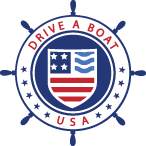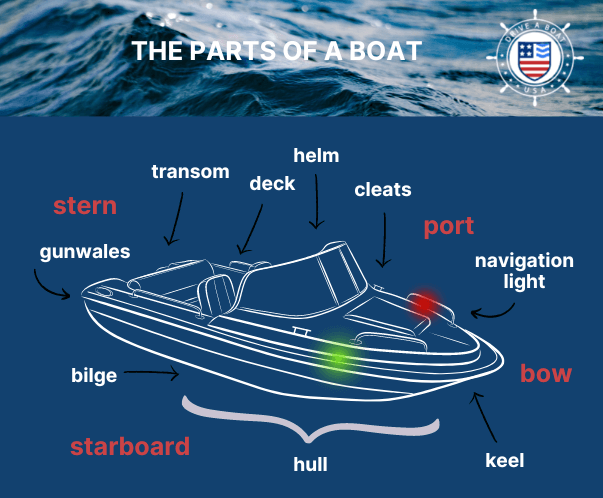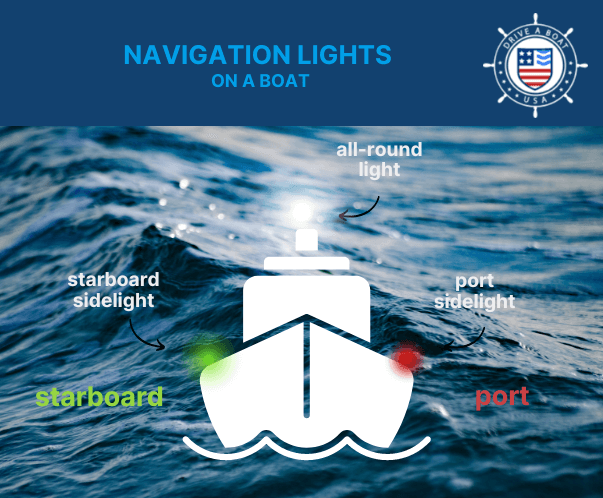Boating Terminology: The Parts of a Boat
Knowing the parts of a boat and being able to call them by their correct names is important, whether you are just learning how to drive a boat or you already comfortable navigating the water with different types of vessels. Boats may seem to have a front, back, kitchen and bathroom – but they don’t!
Not only is it important for boater safety, being able to identify the anatomy of watercraft will also make you feel more at home with fellow boaters and enjoy your time out on the water. Here’s a guide to the basic terms used for the parts of a boat.
Front, back, left and right of a boat
Let’s start with the basics. The front, rear, left and right of any vessel are called by specific names. When in a boat, facing forward, these are as follows:
- The left side of a boat is called the
- The right side of a vessel is called the starboard.
- The front of a watercraft is called the bow, pronounced to rhyme with ‘how’. The bow allows a boat to go up and over waves.
- The back of a boat is called the On most boats, the engines are located at the stern, sometimes on a cross-section called a transom. The stern may also be a designated storage or seating area.
Other parts of a boat
Of course, there’s more to a boat than a simple outline. If a boat contains a kitchen, it’s referred to as the galley. If there is a bathroom, it will be called the head.
Even smaller boats with fewer amenities have specific common structural components that every boater should be able to identify by name. Here are the most important, in alphabetical order. Refer to the images as needed!
Bilge
A vessel’s bilge is the lowest point on the inside of the boat. This is where excess water collects to be emptied back into the water body.
Cleats
Cleats are metal fittings on the top of a boat, used when docking your boat. A boater will attach their boat to the dock using ropes or cables tied between the cleats and the dock.
Deck
The deck of a boat is the area that people walk or sit on, the ‘roof’ of the hull. Although it seems to exist to accommodate passengers and objects, it is actually of structural importance and is used to support people and equipment purely out of convenience.
Gunwales
The gunwales, pronounced ‘gunnels’, are the upper edges of the boat’s hull. They provide extra rigidity to the boat’s structure.
Helm
The helm is a general term that includes everything used to steer a boat, including the engine controls and the wheel. Depending on the type of boat, the helm will include different individual elements.
Hull
The entire body of a boat is called the hull. Different boats have different shaped hulls, each of which is suited to specific conditions and situations:
- Planing or ‘v-shaped’ hull: This type of hull glides over the water as the boat gains speed. It’s good for rough water and is common on powerboats.
- Pontoon hull: This hull is buoyant thanks to pontoons on each side of the vessel.
- Displacement hull: This is the name for the hull of a larger boat that is designed to move though the water.
- Flat bottomed hull: Flat-bottomed hulls are very stable and great for small fishing boats, for example.
- Round bottomed hulls: A round-bottomed hull is good for moving through the water, but lacks stability. A canoe is an example of a boat with a round-bottomed hull.
Keel
The keel is the lowest point of the boat’s hull. Like a backbone, it runs from bow to stern on the bottom of the boat and provides strength and stability to the hull. It also prevents a boat from drifting sideways in the water.
Navigation lights
Most boats are equipped with navigation lights. For powered boats less than 39.4 feet, or 12 meters long, the following lights are obligatory:
- Starboard sidelight, a green light near the bow on the starboard side
- Port sidelight, a red light near the bow on the port side
- All-round light (for powerboats), a white light
For boats between 39.4 feet (12 meters) and 65.6 feet (20 meters) in length, you need the following navigation lights, in addition to the green and red sidelights:
- Stern light, a white light set as close to the stern as possible
- Masthead light, a white light at the fore and aft centreline of the boat
Learn everything you need to know about boat anatomy with Drive a Boat USA
Boating is a world with its own rules, regulations and language. To navigate safely and effectively, every boat owner needs to know what the parts of a boat are, and how to use every element of their vessel correctly.
Trust Drive a Boat USA to teach you what you need to know through our premium boating safety course. With interactive quizzes and instructional videos, you won’t find another course that can compete. Contact us today if you have questions about obtaining your official state-approved boating license and getting on the water!



